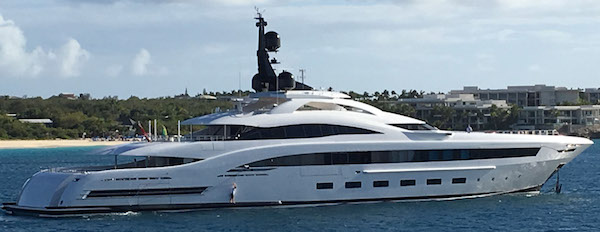Anchor troubles
CHIRP highlights a dangerous practice on board a superyacht and the absence of effective risk assessment when conducting a non-routine activity.…
The Confidential Reporting Programme for Aviation and Maritime (CHIRP) actively encourages seafarers to maximise the number of reports of incidents and near misses, thereby encouraging the sharing of lessons to be learned and improving safety culture across the board. Their bulletins mainly comprise reports from the commercial industry, where incident reporting is commonplace, but the latest issue concerns a dangerous practice on board a superyacht and the absence of effective risk assessment when conducting a non-routine activity.
The latest CHIRP bulletin reports an incident in which a superyacht, while weighing anchor, found her anchor fouled. While she was operating propulsion at very slow speed, a crewmember jumped into the water, climbed onto the anchor to clear the fouled line, and was then recovered as the yacht gathered way.
Image courtesy of CHIRP
What did the reporter tell CHIRP?
A crewmember was seen on the starboard side standing on a ledge just above the waterline with no lifejacket or safety harness visible; he was hanging on to a single line from above. He balanced there for some time, before jumping into the sea and swimming up to the bow. He then climbed onto the anchor.
The foredeck crew continued raising the anchor while the man was busily working to clear the fouled rope. Once he had cleared the anchor, he jumped back into the sea, drifting back down the starboard side of the yacht, which was underway at slow speed. He was then recovered on board and the vessel departed.
Lessons to be learned
The report acknowledges that the day was sunny and the conditions fair, a fouled anchor was obviously not in the plan so it would have been easy to visualise a quick reaction to the situation without proper safety arrangements in place.
“The hazards are clear,” CHIRP advises. “A particularly serious one is entanglement in the fouled line while the man was attempting to clear it from the anchor to which he himself was clinging. It is not obvious whether the line was under tension or whether it was light or heavy. However, a sudden increase or release in tension could have had the man trapped under water or potentially towed astern near the propellers.
“The vessel was operating propulsion at the time. It is not clear whether the man on the anchor was continuously supervised or not. He certainly should have been as it is very unlikely that he was visible from the bridge. He was not wearing a life jacket and did not have a lifeline or harness other than the line onto which it is reported he was hanging. These are severe safety lapses.”
Conclusion
CHIRP concludes that all was well, but it might not have been. “[This is] a classic near miss in a realm of seafaring where the relatively relaxed routines of recreational boating in good weather can start to dilute the procedures necessary in larger vessels,” the report states. “Was an operational risk assessment undertaken?”
CHIRP claims to have contacted the vessel’s management company with the report, who were grateful that it had been forwarded, and outlined a reactive process of which the aim is to ensure that health and safety awareness is improved on board, that such unnecessary risks are not taken in future, and that a comprehensive drill is in place in the event of future fouled anchors.
This procedure will include provision of a rescue boat (all crew donning life jackets), stationing of two crewmembers at the bow (for the anchor winch and to observe the boat), and VHF communications between boat, bow and bridge. The procedure will engage one tender crewman in release of the fouled line (ensuring it is not electrical) while the other manoeuvres. If this approach does not achieve the aim, boat and crew will be recovered, the anchor let go again, and commercial diver assistance sought.
The full report and CHIRP bulletin can be read here.
Click here to become part of The Superyacht Group community, and join us in our mission to make this industry accessible to all, and prosperous for the long-term. We are offering access to the superyacht industry’s most comprehensive and longstanding archive of business-critical information, as well as a comprehensive, real-time superyacht fleet database, for just £10 per month, because we are One Industry with One Mission. Sign up here.




